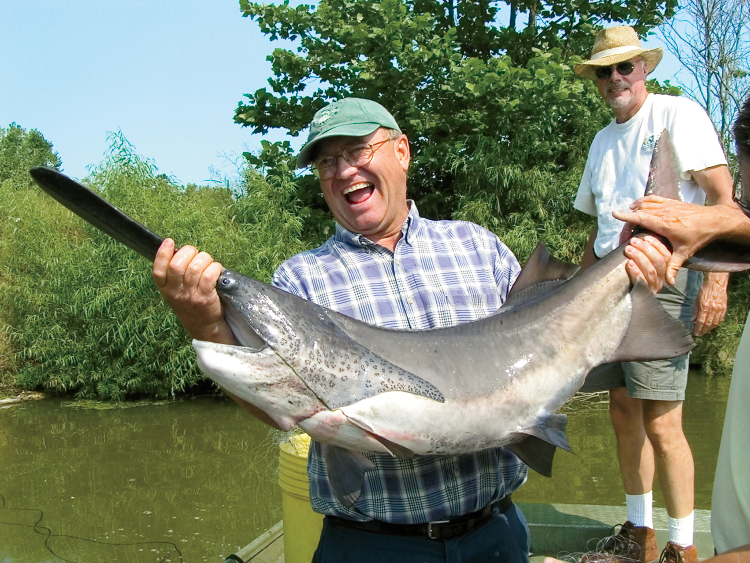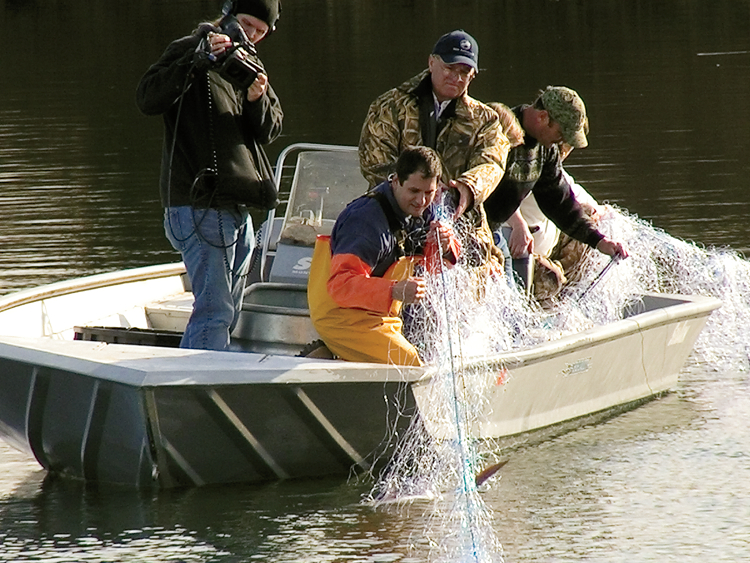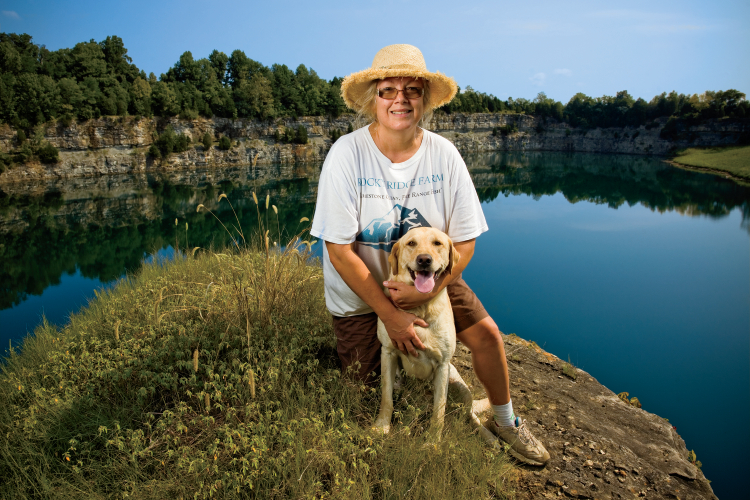Home > Kentucky > Kentucky Crops & Livestock > The Fish are Biting in Kentucky
The Fish are Biting in Kentucky
When the notion of “buy local” comes to mind, most people probably envision vine-ripened tomatoes at a roadside stand or a pick-your-own orchard with acres and acres of fresh, crisp apples.
Angela Caporelli believes that the concept may have begun with fish.
As Aquaculture Coordinator and Marketing Specialist for the Kentucky Department of Agriculture since 2001, Caporelli knows a thing or two about fish farming. She has been in the industry for some 30 years and worked in the commercial seafood fishing industry prior to her current position. Caporelli also spent four years in Africa working in aquaculture, and recently traveled to Kenya as a consultant to help with that country’s fishing industry.
She has been instrumental in the development of Kentucky’s aquaculture segment, which began around the early 1990s.
“We started out with a bang in Kentucky and had some really good legislative moves concerning aquaculture,” says Caporelli. “It was before the ‘buy local’ movement and the acknowledgement that fresher and closer are better. People became much more aware of how their food is being raised, harvested, processed, and that’s a great thing. People like to support their local farmer.”
Including those who do their farming in the water. Caporelli says aquaculture is a growing industry in a state that has strong roots in more conventional farming.
“My philosophy is, it doesn’t matter if you have a quarter-acre pond or a couple of hundred-acre reservoir or a quarry, there is something in aquaculture you could do,” she says.
Peddling Paddlefish
Jeanine Raymond and her husband, Guy Raymond, entered the world of aquaculture after buying property near Louisville that wasn’t really suitable for traditional farming. However, half of the 150 acres were bodies of water, including a large rock quarry that could hold water free of sediments and other contaminants – perfect for paddlefish.
After consulting with Caporelli and officials at Kentucky State University’s aquaculture program, the Raymonds learned more about paddlefish and decided to stock their quarry with these unique, prehistoric fish. Weighing more than 200 pounds, they are the largest freshwater fish in the United States and are valued as a source for caviar as well as for their boneless white meat.
In addition to the eggs and flesh of the paddlefish, the Raymonds are also selling bass, bluegill and crappie to area restaurants.
“We’ve had the fish tested, and there were very few contaminants,” Jeanine Raymond says. “We get a high price per pound wholesale because of the clean product we produce here. The restaurants love that.”
It took a number of years for the Raymonds to begin marketing what they had stocked on their farm, but aquaculture has turned into quite the livelihood.
“When we bought this property, it was listed, tax-wise, as wasteland,” Raymond says, “and now it’s a productive fish farm.”
Caporelli believes that similar results are on the horizon for aquaculture, which is the world’s fastest-growing segment of agriculture. And Kentucky could be at the forefront of fish farming, especially with its Department of Agriculture and Kentucky State University resources.
“Kentucky State University’s aquaculture program is one of the top five in the country,” Caporelli says. “There’s a lot of great knowledge right in downtown Frankfort.”







